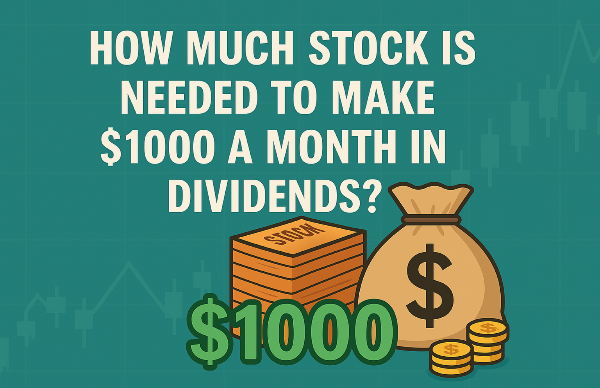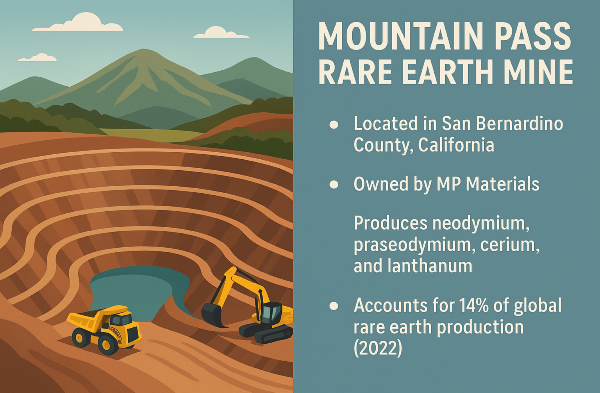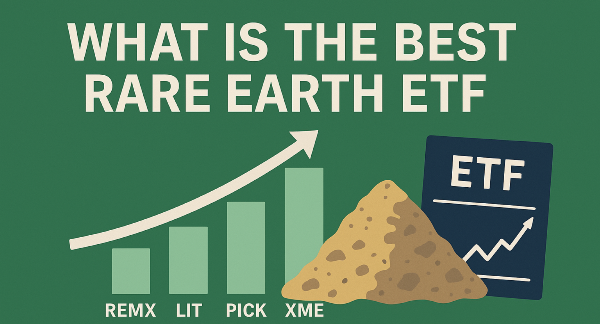Key Takeaways
To earn $1,000 a month in dividends, you’d typically need about $300,000 to $400,000 invested in dividend stocks yielding around 3–4% annually. The exact amount depends on the dividend yield of your chosen stocks—higher yields require less capital but may come with higher risk.
Introduction
Dividend investing is a strategy where investors buy stocks in companies that regularly distribute a portion of their earnings as dividends. Unlike growth stocks, which rely on price appreciation, dividend stocks provide consistent cash flow, making them an appealing option for those seeking passive income. This steady stream of earnings can help cover expenses, supplement retirement income, or even reinvest to accelerate portfolio growth. Key factors influencing dividend income include the stock's yield, payout consistency, and overall financial stability of the issuing company. By carefully selecting dividend-paying stocks and diversifying investments, investors can build a reliable income source while benefiting from potential long-term capital appreciation.
Understanding Dividend Yield
Dividend yield is a key metric in dividend investing, representing the annual dividend payment as a percentage of a stock’s price. It serves as a crucial indicator of how much income an investor can expect relative to their investment. A higher dividend yield typically translates to greater income potential, but it can also signal increased risk if the payout is unsustainable. For example, a stock with a 3% yield may require a larger capital investment to generate substantial income, whereas a 7% yield offers higher payouts but might come with volatility or financial instability. Understanding how yield affects earnings helps investors balance risk and reward when building a dividend-focused portfolio.
Calculating the Investment Needed
To determine the amount of stock needed to generate $1,000 in monthly dividend income, investors use a straightforward formula: Investment Amount = (Desired Monthly Income × 12) ÷ Dividend Yield. This formula calculates the total capital required based on different yield percentages. For example, to earn $12,000 annually from a stock with a 3% dividend yield, an investor would need $400,000 in invested capital ($12,000 ÷ 0.03). Similarly, with a 5% yield, the required investment drops to $240,000, and with a 7% yield, only $171,429 is needed. Understanding these calculations helps investors align their portfolio strategy with their financial goals and risk tolerance.
While higher-yield stocks require less upfront capital, they may carry greater risk due to potential dividend cuts or stock price volatility. Companies with stable, lower yields often provide more reliable payouts, while those offering high yields may face financial challenges that could impact long-term sustainability. Investors should weigh their options carefully, considering dividend consistency, company fundamentals, and reinvestment strategies. A well-balanced portfolio, combining moderate yields with dividend growth potential, can enhance passive income while safeguarding against market fluctuations.
Factors That Affect Your Dividend Strategy
Choosing the right dividend stocks is a crucial part of maximizing passive income. Investors must decide between high-yield stocks, which offer larger immediate payouts but may carry more risk, and stable dividend stocks, which provide reliable income and long-term growth potential. Diversification is also key—spreading investments across sectors and industries helps mitigate risk and ensures steady cash flow even in fluctuating markets. While high yields can be tempting, they often signal financial instability or unsustainable payouts, making thorough research essential. Additionally, investors should factor in tax implications, as dividends are subject to different tax treatments depending on whether they’re qualified or ordinary dividends, potentially affecting overall returns.
Dividend Growth Investing
Reinvesting dividends can significantly accelerate income through compound growth. By reinvesting payouts back into dividend-paying stocks, investors can increase their share count over time, leading to higher future dividends and portfolio expansion. This strategy is especially powerful when investing in dividend growth stocks—companies that consistently increase their payouts. A classic example is Johnson & Johnson (JNJ) or Procter & Gamble (PG), both of which have a long history of dividend increases. Over years, the reinvestment effect can turn modest returns into substantial passive income, making dividend growth investing a cornerstone for long-term financial independence.
Real-World Examples & Case Studies
Certain companies have built reputations for consistently paying dividends, making them attractive choices for income-focused investors. Dividend aristocrats, such as Johnson & Johnson (JNJ), Procter & Gamble (PG), and Coca-Cola (KO), have increased their payouts for decades, showcasing financial stability and commitment to shareholders. Similarly, high-yield stocks like Realty Income (O) and AT&T (T) offer substantial regular income, though with varying levels of risk. Investors seeking dependable dividend streams often prioritize companies with strong balance sheets, sustainable earnings, and a history of dividend growth to ensure long-term reliability.
Achieving $1,000 per month in dividends requires strategic portfolio building. Many successful dividend investors follow a diversification strategy, spreading investments across multiple sectors to minimize risk. For example, an investor might allocate capital between blue-chip stocks, REITs, and dividend ETFs to create a stable income stream. Lessons from experienced dividend investors highlight the importance of reinvestment, yield balance, and patience—instead of chasing the highest yields, they focus on dividend growth, compounding, and tax-efficient investing. By selecting quality stocks with sustainable dividends, investors can steadily grow passive income while protecting against market fluctuations.
Conclusion
Building a portfolio that generates $1,000 per month in dividends requires strategic planning, careful stock selection, and a balance between dividend yield and long-term sustainability. By understanding dividend yield calculations, considering high-yield vs. stable dividend stocks, and leveraging dividend growth investing, investors can create a reliable income stream. Real-world examples demonstrate the value of diversification, reinvestment, and patience, ensuring steady passive income while minimizing risk. Whether focusing on blue-chip dividend aristocrats or higher-yield opportunities, a well-structured approach can pave the way toward financial independence through dividends.
🚀 Your Ultimate Guide to Dividend Investing! 💰
Want to build reliable passive income? Looking to live off dividends? Start here with the top dividend insights:
🏆 Top Dividend Stock Picks
💰 Passive Income & Dividend Investing Strategies
🔍 How Much to Invest for BIG Dividend Income
⚡ Dividend Taxes & Smart Selling Strategies
🔗 Bookmark this guide & start building your dividend wealth today! 🚀💸




























Key Takeaways
To earn $1,000 a month in dividends, you’d typically need about $300,000 to $400,000 invested in dividend stocks yielding around 3–4% annually. The exact amount depends on the dividend yield of your chosen stocks—higher yields require less capital but may come with higher risk.
Introduction
Dividend investing is a strategy where investors buy stocks in companies that regularly distribute a portion of their earnings as dividends. Unlike growth stocks, which rely on price appreciation, dividend stocks provide consistent cash flow, making them an appealing option for those seeking passive income. This steady stream of earnings can help cover expenses, supplement retirement income, or even reinvest to accelerate portfolio growth. Key factors influencing dividend income include the stock's yield, payout consistency, and overall financial stability of the issuing company. By carefully selecting dividend-paying stocks and diversifying investments, investors can build a reliable income source while benefiting from potential long-term capital appreciation.
Understanding Dividend Yield
Dividend yield is a key metric in dividend investing, representing the annual dividend payment as a percentage of a stock’s price. It serves as a crucial indicator of how much income an investor can expect relative to their investment. A higher dividend yield typically translates to greater income potential, but it can also signal increased risk if the payout is unsustainable. For example, a stock with a 3% yield may require a larger capital investment to generate substantial income, whereas a 7% yield offers higher payouts but might come with volatility or financial instability. Understanding how yield affects earnings helps investors balance risk and reward when building a dividend-focused portfolio.
Calculating the Investment Needed
To determine the amount of stock needed to generate $1,000 in monthly dividend income, investors use a straightforward formula: Investment Amount = (Desired Monthly Income × 12) ÷ Dividend Yield. This formula calculates the total capital required based on different yield percentages. For example, to earn $12,000 annually from a stock with a 3% dividend yield, an investor would need $400,000 in invested capital ($12,000 ÷ 0.03). Similarly, with a 5% yield, the required investment drops to $240,000, and with a 7% yield, only $171,429 is needed. Understanding these calculations helps investors align their portfolio strategy with their financial goals and risk tolerance.
While higher-yield stocks require less upfront capital, they may carry greater risk due to potential dividend cuts or stock price volatility. Companies with stable, lower yields often provide more reliable payouts, while those offering high yields may face financial challenges that could impact long-term sustainability. Investors should weigh their options carefully, considering dividend consistency, company fundamentals, and reinvestment strategies. A well-balanced portfolio, combining moderate yields with dividend growth potential, can enhance passive income while safeguarding against market fluctuations.
Factors That Affect Your Dividend Strategy
Choosing the right dividend stocks is a crucial part of maximizing passive income. Investors must decide between high-yield stocks, which offer larger immediate payouts but may carry more risk, and stable dividend stocks, which provide reliable income and long-term growth potential. Diversification is also key—spreading investments across sectors and industries helps mitigate risk and ensures steady cash flow even in fluctuating markets. While high yields can be tempting, they often signal financial instability or unsustainable payouts, making thorough research essential. Additionally, investors should factor in tax implications, as dividends are subject to different tax treatments depending on whether they’re qualified or ordinary dividends, potentially affecting overall returns.
Dividend Growth Investing
Reinvesting dividends can significantly accelerate income through compound growth. By reinvesting payouts back into dividend-paying stocks, investors can increase their share count over time, leading to higher future dividends and portfolio expansion. This strategy is especially powerful when investing in dividend growth stocks—companies that consistently increase their payouts. A classic example is Johnson & Johnson (JNJ) or Procter & Gamble (PG), both of which have a long history of dividend increases. Over years, the reinvestment effect can turn modest returns into substantial passive income, making dividend growth investing a cornerstone for long-term financial independence.
Real-World Examples & Case Studies
Certain companies have built reputations for consistently paying dividends, making them attractive choices for income-focused investors. Dividend aristocrats, such as Johnson & Johnson (JNJ), Procter & Gamble (PG), and Coca-Cola (KO), have increased their payouts for decades, showcasing financial stability and commitment to shareholders. Similarly, high-yield stocks like Realty Income (O) and AT&T (T) offer substantial regular income, though with varying levels of risk. Investors seeking dependable dividend streams often prioritize companies with strong balance sheets, sustainable earnings, and a history of dividend growth to ensure long-term reliability.
Achieving $1,000 per month in dividends requires strategic portfolio building. Many successful dividend investors follow a diversification strategy, spreading investments across multiple sectors to minimize risk. For example, an investor might allocate capital between blue-chip stocks, REITs, and dividend ETFs to create a stable income stream. Lessons from experienced dividend investors highlight the importance of reinvestment, yield balance, and patience—instead of chasing the highest yields, they focus on dividend growth, compounding, and tax-efficient investing. By selecting quality stocks with sustainable dividends, investors can steadily grow passive income while protecting against market fluctuations.
Conclusion
Building a portfolio that generates $1,000 per month in dividends requires strategic planning, careful stock selection, and a balance between dividend yield and long-term sustainability. By understanding dividend yield calculations, considering high-yield vs. stable dividend stocks, and leveraging dividend growth investing, investors can create a reliable income stream. Real-world examples demonstrate the value of diversification, reinvestment, and patience, ensuring steady passive income while minimizing risk. Whether focusing on blue-chip dividend aristocrats or higher-yield opportunities, a well-structured approach can pave the way toward financial independence through dividends.
🚀 Your Ultimate Guide to Dividend Investing! 💰
Want to build reliable passive income? Looking to live off dividends? Start here with the top dividend insights:
🏆 Top Dividend Stock Picks
💰 Passive Income & Dividend Investing Strategies
🔍 How Much to Invest for BIG Dividend Income
⚡ Dividend Taxes & Smart Selling Strategies
🔗 Bookmark this guide & start building your dividend wealth today! 🚀💸